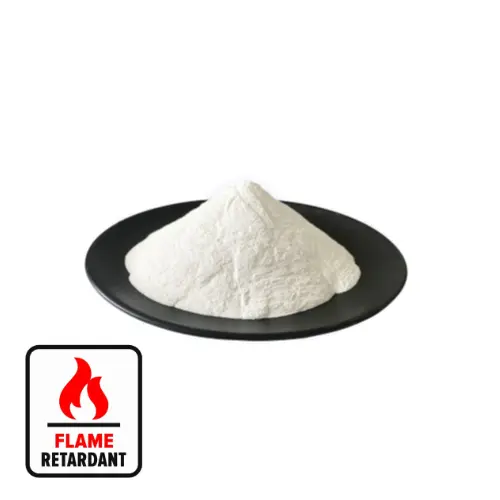Hebei Messi Biology Co., Ltd. stated that magnesium hydroxide is an important inorganic material and is widely used in daily life. Magnesium hydroxide can be used to neutralize acidic wastewater, absorb heavy metals in water, serve as a wastewater decolorizer, and absorb sulfur dioxide in flue gas. As a green inorganic flame retardant, magnesium hydroxide has received widespread attention at home and abroad. However, in order to achieve the ideal flame retardant effect of the material, the addition amount of magnesium hydroxide is usually as high as 60%. Its poor compatibility with organic matter will affect the mechanical properties and mechanical properties of the material. The sample has good dispersibility in the dry state, which is a prerequisite for good dispersion in organic matter.
The effect of filling conventional magnesium hydroxide and hexagonal flake magnesium hydroxide on the mechanical properties of ethylene-vinyl acetate copolymer (EVA) was studied. It was found that conventional magnesium hydroxide had a greater reduction in the elongation at break of the material, while hexagonal flake magnesium hydroxide had a smaller effect. Highly dispersible hexagonal flake magnesium hydroxide was prepared by combining magnesium chloride and ammonia water with a hydrothermal method. It was found that the hexagonal flake product had good compatibility with EVA. Therefore, the preparation of hexagonal flake products with good morphology and dispersion can increase the dispersibility and compatibility of magnesium hydroxide in other composite materials, and can also reduce the impact on the mechanical properties and processing properties of the material.

This article studies the effect of the preparation method on the crystal morphology and crystal face growth. Magnesium hydroxide was synthesized using a microchannel reactor, and the effect of the precipitant on the crystal morphology and crystal face growth was explored. Then, the hydrothermal reaction was coupled to study the effect of the hydrothermal reaction on the crystal morphology and crystal face growth, and the process route for preparing flame-retardant magnesium hydroxide was explored.
This article prepared magnesium hydroxide by a microchannel reactor, and the synthetic product was coupled with a hydrothermal reaction to prepare flake magnesium hydroxide with good dispersion. The following conclusions were drawn:
1) At room temperature, the magnesium hydroxide sample prepared with sodium hydroxide as the alkali source in the reactor was severely agglomerated, while the magnesium hydroxide prepared with ammonia and triethylamine as the alkali source had relatively good dispersion and was irregular flakes. The XRD diffraction peak of the sample was consistent with the standard card, indicating that magnesium hydroxide with higher purity was prepared.
2) During the hydrothermal preparation process, the organic solvent at the bottom of the kettle would inhibit the growth of the (001) crystal face. The use of sodium hydroxide solution at the bottom of the kettle can promote the formation of growth bases and prepare nano hexagonal flaky magnesium hydroxide. The whiteness, purity and particle size of the sample meet the standards for magnesium hydroxide used for flame retardancy.
